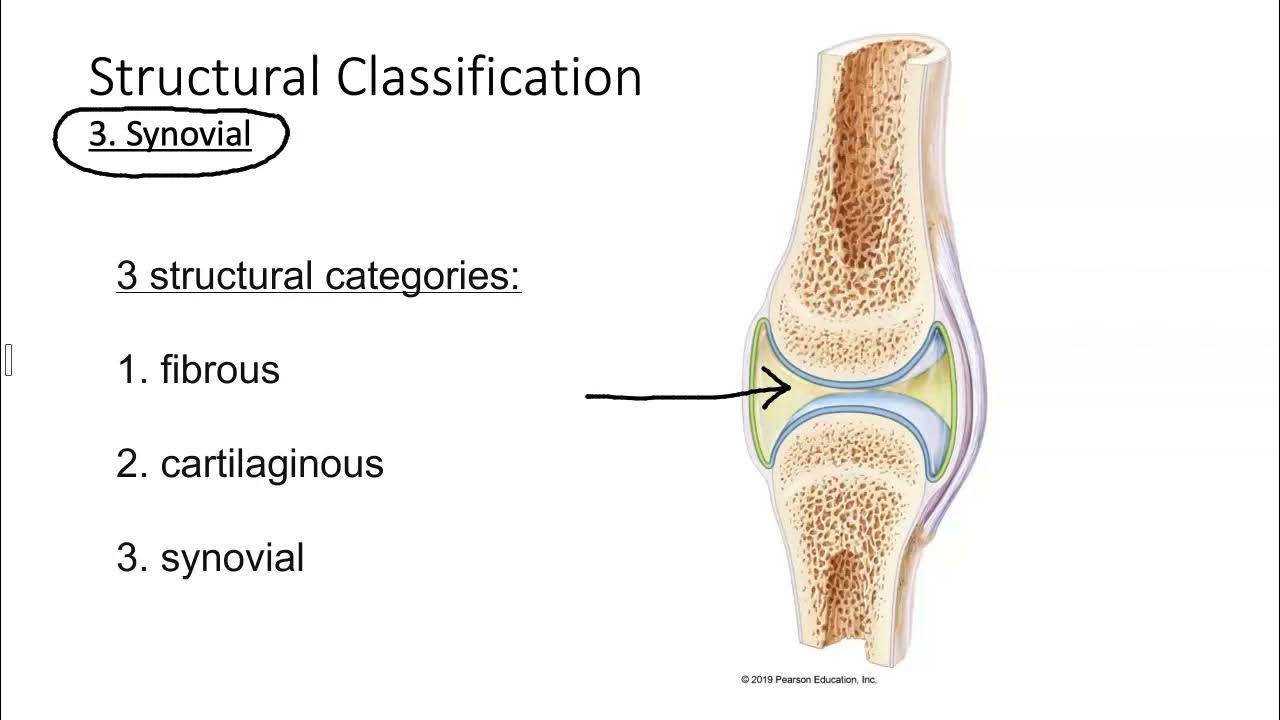Resumão: ARTICULAÇÕES
Summary
TLDRIn this video, Professor Natália Henneck provides an insightful overview of human joint classifications, focusing on the three main types: fibrous, cartilaginous, and synovial. She explains each type's characteristics, including subcategories like sutures, syndemoses, and synovial joints such as hinge, pivot, and ball-and-socket joints. The video serves as a quick review of essential joint knowledge for those interested in anatomy, with further resources available on her channel for deeper learning. Aimed at students, the content is informative and easy to understand, offering both foundational and detailed explanations of joint anatomy.
Takeaways
- 😀 Articulations are the places where two or more bones meet in the human body.
- 😀 There are three main types of articulations: fibrous, cartilaginous, and synovial.
- 😀 Fibrous articulations (synarthroses) are connected by fibrous tissue and include sutures, syndesmoses, and gomphoses.
- 😀 Cartilaginous articulations (amphiarthroses) are united by cartilage or cartilage and fibrous tissue, including primary and secondary types.
- 😀 Synovial articulations (diarthroses) are the most complex and allow a wide range of movements, with a synovial fluid cavity and articular capsule.
- 😀 Synovial joints are classified based on shape and movement, such as hinge, pivot, saddle, ellipsoid, plane, and ball-and-socket joints.
- 😀 Hinge joints allow movement in one axis, like the elbow joint, permitting flexion and extension.
- 😀 Pivot joints enable rotational movements, such as the articulation between the first and second cervical vertebrae (atlanto-axial joint).
- 😀 Saddle joints allow movements in two axes, like the thumb joint (between the first metacarpal and trapezium).
- 😀 Ball-and-socket joints, like the hip joint, allow a wide range of movements in multiple directions, including flexion, extension, rotation, and circumduction.
- 😀 This video serves as a quick review of the key concepts about articulations, with more detailed explanations available in the channel's playlist on the skeletal system.
Q & A
What are joints and why are they important?
-Joints are the locations where two or more bones meet in the body. They are crucial because they enable movement and provide support to the skeleton.
What are the three main types of joints mentioned in the script?
-The three main types of joints are fibrous joints, cartilaginous joints, and synovial joints.
What are fibrous joints and what are their characteristics?
-Fibrous joints, also known as synarthroses, are joints where bones are united by fibrous connective tissue. These joints allow little to no movement and include sutures, syndesmoses, and gomphoses.
What are cartilaginous joints and how do they differ from fibrous joints?
-Cartilaginous joints, or amphiarthroses, are joints where the bones are connected by cartilage or a combination of cartilage and fibrous tissue. They allow for limited movement and are classified as primary (synchondroses) or secondary (symphyses).
What are synovial joints and why are they important?
-Synovial joints, or diarthroses, are the most complex and allow a wide range of movements. They are characterized by a synovial cavity filled with fluid and are surrounded by a joint capsule. These joints are essential for activities that require mobility.
Can you explain the different types of synovial joints mentioned in the script?
-The script mentions several types of synovial joints: hinge joints (like the elbow), pivot joints (like the atlantoaxial joint in the neck), saddle joints (like the first metacarpal and trapezium), ellipsoid joints (like the knee), plane joints (like the acromioclavicular joint), and ball-and-socket joints (like the hip).
What is a hinge joint and where can it be found in the body?
-A hinge joint allows for flexion and extension movements and is uniaxial, meaning it moves along a single axis. A common example is the elbow joint.
What is a ball-and-socket joint and where is it located?
-A ball-and-socket joint is a multiaxial joint that allows for movements in multiple directions. An example of this joint is the hip joint, where the femur fits into the acetabulum of the pelvis.
What are some examples of cartilaginous joints and their function?
-Examples of cartilaginous joints include the intervertebral discs and the pubic symphysis. These joints allow limited movement and provide cushioning and support.
How do fibrous joints differ in terms of movement compared to synovial joints?
-Fibrous joints are mostly immovable or allow very limited movement, whereas synovial joints are highly movable, allowing for a wide range of motions.
Outlines

This section is available to paid users only. Please upgrade to access this part.
Upgrade NowMindmap

This section is available to paid users only. Please upgrade to access this part.
Upgrade NowKeywords

This section is available to paid users only. Please upgrade to access this part.
Upgrade NowHighlights

This section is available to paid users only. Please upgrade to access this part.
Upgrade NowTranscripts

This section is available to paid users only. Please upgrade to access this part.
Upgrade NowBrowse More Related Video

Resumão: SISTEMA ARTICULAR

Classification of joints

Joints: Structure and Types of Motion

Artrologia - Anatomia animal - Medicina Veterinária | Aprenda Tudo Nessa Vídeo Aula!

Articulações: Sinartroses, Anfiartroses e Sinoviais - Classificação e movimentos - VideoAula 035

TECIDO CARTILAGINOSO | Histologia
5.0 / 5 (0 votes)